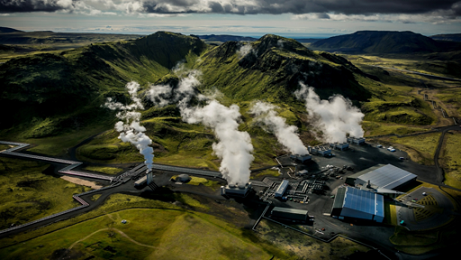
The Paris Climate Accords adopted by 196 parties set ambitious goals of limiting global warming to well below 2 degrees, preferability 1.5 degrees, compared to pre-industrial levels. The level of annual CO2 emission worldwide is approaching 40 billion tonnes (GtCO2); combining this with the delay of mitigation efforts, shows large scale Carbon Dioxide Removal (CDR) will likely be needed in the coming decades.
The recent IPCC reports have drawn attention to the concept of negative emission technologies such as direct air carbon capture and storage (DACCS). This article will explore DACCS technology, providing helpful insights, awareness and understanding of the topic.
What is DACCS?
Currently, there are 19 DACCS facilities across the world that capture more than 0.01 MtCO2/year (metric tons per year). The latest plant is in Iceland, by Climeworks and CarbFix, and is capturing 4 KtCO2/year.
At present there are two alternatives to capture CO2 from the atmosphere:
- Liquid: passing air through chemical solutions, which remove the CO2
- Solid: uses solid sorbent filters which chemically bind with CO2
The CO2 can then be injected deep underground in certain geological locations or be used in products or application. To maximise the benefits, most of the captured CO2 would need to be stored in vast underground sequestrations.
Plants nowadays are small and sell the captures CO2 for use, the plant in Iceland, capturing CO2 and injecting it underground, is the first operating application of this type and is the largest DACCS project to-date. However, larger projects are underway- the first-large scale DACCS plant is being developed in the US through a partnership between Carbon Engineering and Occidental Petroleum, this will become operational by 2024 and will capture up to 1 MtCO2/year.
Why CO2?
There are many greenhouse gases emitted that are causing the climate crisis, why focus on CO2? Under measures and warning impacts, CO2 is the most important greenhouse gas emitted by humans. This measure considers many factors such as the total emission rate of the gas, atmospheric lifetime and absorption ability of solar radiation.
Resources
Cost
DACCS remain one of the most expensive methods for CO2 reduction, ranging between $240 – $600 depending on the systems and technologies used. In comparison most reforestation cost less than $50/tonne.
However, the rate of development in this area will likely accelerate through organisational and governmental support. In November 2021 the US Department of Energy (DoE) announced its Carbon Negative Initiative, aiming to deploy carbon capture technologies on a gigaton scale by 2050, and driving the cost down to ~$100.
Water
For liquid based DACCS systems, capturing 1 tonne of CO2 can require 1 – 7 tonnes of water. Comparable to the amount of water to produce a tonne of cement or steel. This is significant considering the large-scale water insecurity the world could be facing in the coming decades.
Energy
Energy needs to be from sustainable sources and varies according to the type of capture method. Liquid solvent systems need 900 degrees whereas solid sorbent systems need 80 -120 degrees, currently liquid solvents rely on natural gas and solid sorbents can use waste heat or renewable energy.
There are resource burdens with DACCS, with further research and development, existing methods could be altered and optimised to develop more efficient systems.
Implications
Greater support from the public and private sectors are needed and are already being seen; countries like the US, UK, Chile, Norway etc are providing funding to projects based on carbon removal. Companies like Microsoft, Stripe, Shopify, Swiss Re and United Airlines are also purchasing DACCS from companies like Climeworks through funds to offset their CO2 emissions.
Avoiding the worst effects by limiting warming to 1.5 degrees may require gigatonne scale CDR according to an IPCC report (2018). There are vital adjustments to take for mitigating anthropogenic emissions of CO2; CDR provides a way for these challenges to be reduced. However, assuming the large-scale availability of DACCS worldwide, mitigation efforts could be disincentivised, with the use of fossil fuels still being widespread.
Additionally, because of the novel nature of DAACS the largescale use may have social, environmental, or economic consequences unforeseen. It is important not to overestimate the ability of DACCS in controlling a complex natural system, especially since it may harm or impact future generations. More research will be needed to identify potential negative impacts.
Image Credit: Sigrg, CC BY-SA 4.0, via Wikimedia Commons





